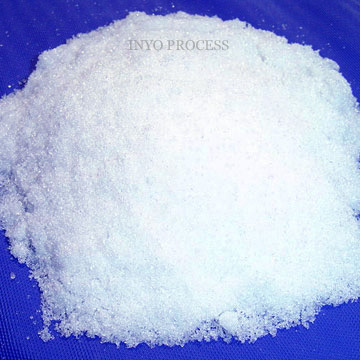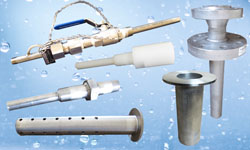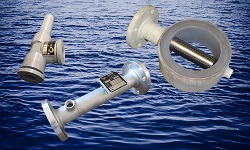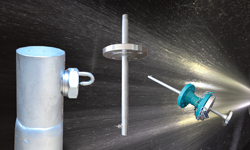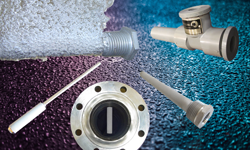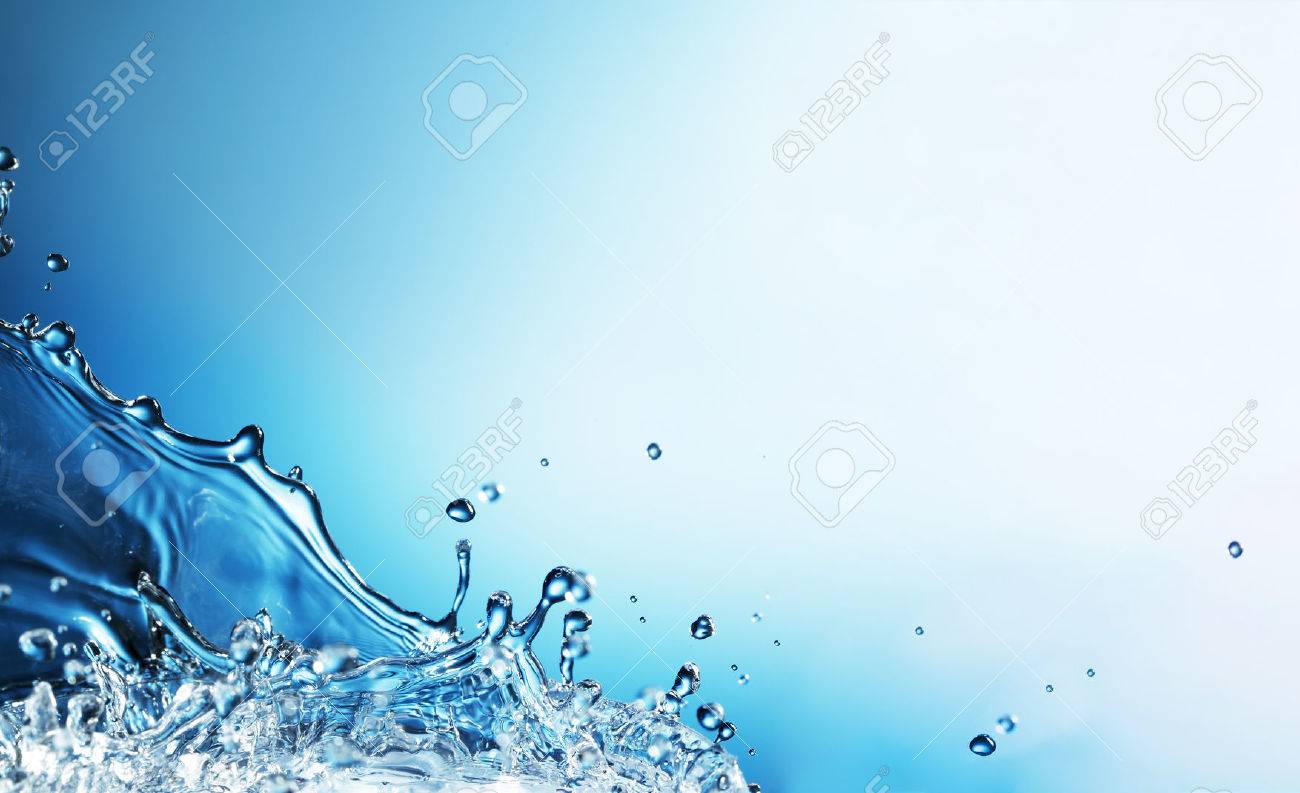Alum Injection System Tips
(aluminum sulfate Al2(SO4)3)
Alum is a non scaling liquid, so a fixed injection quill can be used.Regular cleaning of the injector is generally not needed.
For applications that are difficult to take out of service for maintenance, consider having a duty/standby injector arrangement.
Material Recommendations
Gaskets and O-rings
Buna-N, EPDM, Viton, Neoprene, Teflon
Metals
316 Stainless Steel is an OK choice, and less expensive than more exotic alloys.304 SS is not recommended.
Do not use carbon steel.
Plastics
PVC, Kynar, Teflon
Background
Alum (aluminum sulfate Al2(SO4)3) is one of the most common coagulants in water treatment.
Adding alum to water causes insoluble precipitates includingaluminum hydroxide (AI(OH)3 to be formed.
Alum precipitation is pH sensitive and requires alkalinity in the water for maximum effectiveness.
Chemical Forms
Alum can be obtained both as a powder and in liquid form.
Preparation of an Alum Feed Solution
-
Determine the desired percent solution for feeding the alum (Typically a 10 to 20 percent solution used. for this example, let’s assume a 15% solution).
-
Based on the volume of alum solution to be prepared, determine the weight of alum to add to the solution tank.
For an alum solution volume of 1000 gallons, determine the alum weight as follows:
Alum Weight = 1000 gal x 8.34 lb/gal x 0.15 = 1,251 lb
General Comments When Dosing Alum
The optimum pH range for alum coagulation is 5 to 8.
Alkalini ty must be present for the alum reaction to work effectively.
If there is insufficient alkalinity in the raw water, the pH will be lowered to a point where soluble aluminum ion is formed instead of aluminum hydroxide.
If soluble aluminum is present, this can cause problems in the distribution system and clear well from post flocculation.
Typically 1.0 mg/L of commercial grade alum will consume about 0.5 mg/L of
alkalinity.
Alkalinity must be present for the alum reaction to work effectively.
If there is insufficient alkalinity in the raw water, the pH will be lowered to a point where soluble aluminum ion is formed instead of aluminum hydroxide.
If soluble aluminum is present, this can cause problems in the distribution system and clear well from post flocculation.
Typically 1.0 mg/L of commercial grade alum will consume about 0.5 mg/L of
alkalinity.
At least 5 to 10 mg/L of alkalinity should remain after the reaction to maintain
optimum pH.
1.0 mg/L of alkalinity (in the form of CaCO3), is equivalent to:
-
0.66 mg/L of 85% quicklime (CaO)
-
0.78 mg/L 95% hydrated lime (Ca(OH)3)
-
0.80 mg/L caustic soda(NaOH)
-
1.08 mg/L soda ash (Na2(CO)3)
-
1.52 mg/L sodium bicarbonate (NaHCO3)
If additional alkalinity is needed it should be added before adding the coagulant and thoroughly mixed.
When mixing alum with water to make a feed solution, confirm thatthe pH is below 3.5 to prevent hydrolysis—Hydrolysis will reduce the effectiveness of the alum coagulant.A 10 to 20 percent alum solution by weight will maintain this pH requirement in most applications.
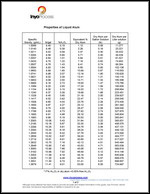
![]() Download a paper on Alum Properties and Alum solution preparation (71 kb)
Download a paper on Alum Properties and Alum solution preparation (71 kb)

